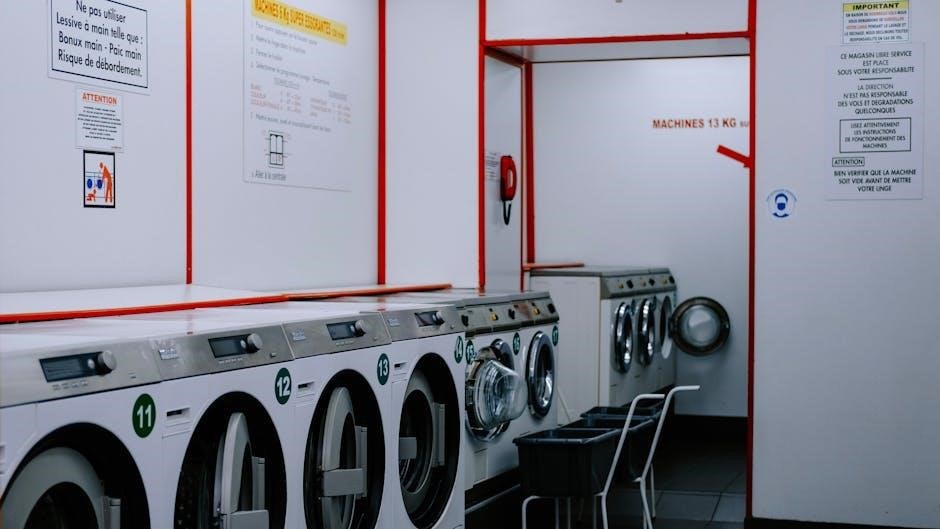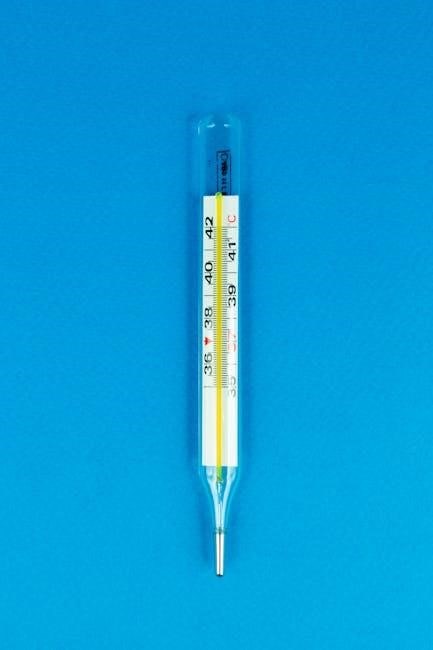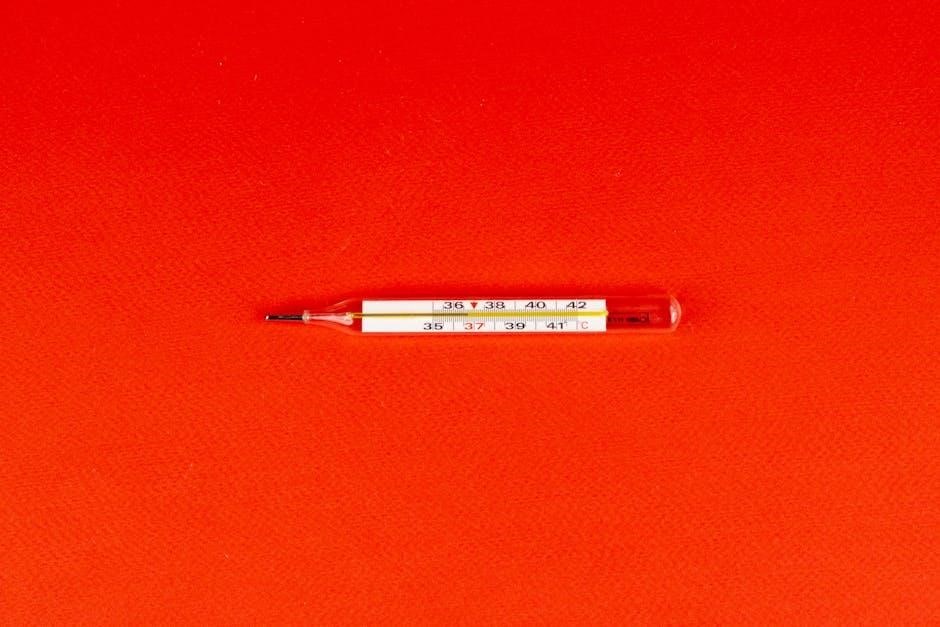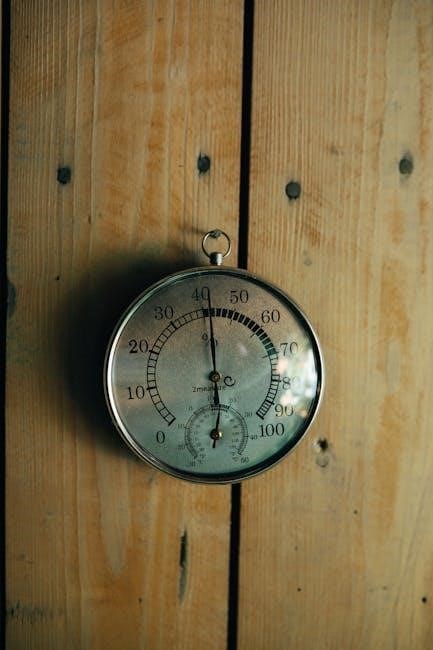Celsius WG is a postemergence herbicide for controlling broadleaf weeds and grasses in warm-season turf. Proper application ensures effectiveness and safety, making these instructions essential for optimal results.
Overview of Celsius WG Herbicide
Celsius WG is a postemergence herbicide designed for controlling broadleaf weeds and grasses in warm-season turf. It targets a wide range of annual and perennial species, ensuring effective weed management. The herbicide is formulated for use on St. Augustinegrass, Bermudagrass, Zoysiagrass, and Centipedegrass, but it is not recommended for Bahia or cool-season grasses. With a low use rate, Celsius WG offers efficient weed control while maintaining turf health. Proper calibration and application are essential for optimal performance and safety.
Importance of Following Instructions
Adhering to the instructions for Celsius WG is crucial for achieving optimal weed control and ensuring safety. Proper application ensures the herbicide works effectively without damaging turf or the environment. Misuse can lead to reduced efficacy, potential turf damage, or environmental hazards. Following the guidelines also minimizes risks to people, pets, and wildlife. Always read and understand the label before use to guarantee successful application and avoid unintended consequences. Compliance with instructions is key to maximizing benefits while maintaining safety and efficiency.

Key Features of Celsius WG
Celsius WG is a postemergence herbicide effective against broadleaf weeds and grasses in warm-season turf. It offers targeted control with a low use rate for optimal results.
Active Ingredients and Formulation
Celsius WG contains the active ingredient iodosulfuron-methyl-sodium, a sulfonylurea herbicide. It is formulated as a water-dispersible granule, ensuring easy mixing and application. This targeted formulation allows for effective weed control while minimizing impact on desirable turf species. Proper mixing with water is essential to maintain efficacy and prevent drift. Always follow label instructions for correct dosage and preparation to ensure optimal performance and safety.
Target Weeds and Grasses
Celsius WG effectively controls a wide range of annual and perennial broadleaf weeds, including dandelion, clover, and plantain. It also targets grassy weeds such as crabgrass and foxtail. The herbicide is specifically designed to manage weeds in warm-season turf, ensuring optimal turf health without harming desirable grass species. Proper application ensures thorough coverage and systemic action against targeted weeds, providing long-lasting control and maintaining a pristine turf appearance.
Approved Turf Types
Celsius WG is specifically approved for use on warm-season turf types, including St. Augustinegrass, Bermudagrass, Zoysiagrass, and Centipedegrass. It is not recommended for Bahia grass or cool-season grasses like Kentucky bluegrass or ryegrass. Ensure the product is applied only to the turf types listed on the label to avoid damage. Proper turf identification is crucial for safe and effective application, as misuse can harm non-target grass species.

Safety Precautions
Always wear recommended PPE, including gloves and eyewear. Avoid spraying near water sources or during high winds to prevent drift. Follow first aid instructions if exposure occurs.
Personal Protective Equipment (PPE)
Wear long-sleeved shirts, long pants, closed-toe shoes, and chemical-resistant gloves when handling Celsius WG. Protective eyewear, such as goggles, is also recommended to prevent exposure. Avoid wearing clothing that may allow pesticides to reach the skin. If spraying, consider using a respirator to minimize inhalation of fine particles. Proper PPE ensures safe handling and application, reducing the risk of skin irritation or other health issues. Always follow the label guidelines for specific PPE requirements to maintain safety during use.
First Aid Instructions
If skin contact occurs, immediately wash the affected area with soap and water. For eye exposure, rinse thoroughly with water for at least 15 minutes. Remove contaminated clothing and wash before reuse. If ingestion occurs, seek medical attention immediately. Do not induce vomiting unless instructed by a healthcare professional. In case of inhalation, move to fresh air and seek medical help if symptoms persist. Always consult the product label or seek professional advice for detailed first aid procedures to ensure proper treatment and safety.
Environmental Hazards
Celsius WG may pose environmental risks if not used properly. Avoid spraying near water bodies, as runoff can contaminate aquatic ecosystems. The herbicide may harm aquatic organisms and non-target plants. Prevent drift onto sensitive areas or neighboring crops. Do not apply if soil is waterlogged or heavy rain is expected, as this increases runoff potential. Properly dispose of unused product and containers to minimize environmental impact. Follow all local regulations and guidelines to protect the environment while using Celsius WG herbicide.

Application Instructions
Calibrate your sprayer to ensure accurate application rates. Mix Celsius WG thoroughly with water to prevent clogging. Apply evenly, avoiding drift onto non-target areas, for optimal results.
Preparation and Mixing
Begin by ensuring your equipment is clean and free of residue. Fill the spray tank halfway with water, then add the recommended dose of Celsius WG. Mix thoroughly to prevent clogging. Complete filling the tank and maintain agitation during application to ensure even distribution. Avoid using water with high pH levels, as this may reduce efficacy. Always follow the label instructions for precise measurements to achieve optimal weed control and minimize environmental impact.
Spraying Techniques
Use a low-pressure, flat-fan nozzle to ensure uniform coverage. Maintain a consistent spray height of 12-24 inches above the turf. Apply in a steady, overlapping pattern to cover the entire area evenly. Avoid spraying when wind speeds exceed 10 mph to prevent drift. Optimal results are achieved when the herbicide is applied directly to the target weeds, ensuring complete leaf coverage. Spraying in the early morning or late afternoon minimizes evaporation and enhances absorption. Always follow label guidelines for precise application techniques.
Watering Before Application
Water the lawn thoroughly 1-2 days before applying Celsius WG to ensure the soil is moist but not saturated. Avoid watering immediately before application, as this can reduce herbicide effectiveness. The turf should be dry to prevent wash-off and ensure proper absorption. Optimal results occur when the soil is moist but not waterlogged, allowing the herbicide to penetrate evenly. Proper pre-application watering helps activate the herbicide and enhances its efficacy against target weeds and grasses in warm-season turf types.

Calibration and Usage Rates
Calibration ensures accurate herbicide application. Determine water volume based on target area and adjust the rate according to label guidelines for optimal effectiveness and safety.
Determining Water Volume
Determining the correct water volume is crucial for effective application. Measure the target area and consult the label for recommended water rates per acre. Ensure even coverage by calibrating your sprayer to deliver the precise volume. Avoid over- or under-application, as this can impact efficacy and safety. Test your sprayer with water to confirm accuracy before adding herbicide. Proper calibration ensures optimal results and minimizes environmental impact. Always follow label guidelines for specific turf types and weed control scenarios.
Calculating the Correct Dose
To calculate the correct dose of Celsius WG, start by determining the size of the area to be treated. Use the recommended rate from the label, typically expressed in ounces per acre or per 1,000 square feet. Measure the water volume needed for the application, as the herbicide rate depends on this. Use the formula: herbicide amount = (water volume per acre × rate per acre) / 128. Ensure accurate measurement to avoid under- or over-application. Adjust based on turf type and target weeds for optimal efficacy and safety.

Temperature Considerations
Apply Celsius WG when temperatures are below 85°F for optimal effectiveness. Avoid application during extreme heat to prevent stress to turfgrass and ensure proper herbicide performance.
Optimal Application Temperature
Apply Celsius WG herbicide when air temperatures are between 65°F and 85°F for optimal effectiveness. Avoid application during extreme heat, as it may stress the turfgrass and reduce herbicide efficacy. Early morning or late afternoon applications are recommended to prevent herbicide breakdown from high midday temperatures. Always follow label instructions for specific temperature guidelines to ensure safe and effective weed control in warm-season turf.
Post-Application Temperature Management
After applying Celsius WG, avoid exposing treated areas to extreme heat above 85°F within 24-48 hours. High temperatures can reduce herbicide efficacy and stress the turf. Watering the lawn lightly post-application can help mitigate heat stress, but ensure not to wash off the herbicide. Monitor weather forecasts to avoid application when high temperatures are expected shortly after treatment. Proper post-application temperature management ensures optimal weed control and turf health in warm-season grasses.

Troubleshooting Common Issues
Common issues with Celsius WG include uneven coverage, poor efficacy, or equipment malfunction. Check for proper calibration, ensure even spraying, and verify herbicide rates to resolve problems effectively.
Uneven Coverage or Poor Efficacy
Uneven coverage or poor efficacy can occur due to improper calibration, insufficient water volume, or incorrect application timing. Ensure the herbicide is evenly mixed and sprayed uniformly across the target area. Avoid applying during extreme weather conditions, such as high winds or excessive heat, which can reduce effectiveness. Check for proper nozzle alignment and clean clogged nozzles to maintain consistent spray patterns; Reapplication may be necessary in areas with persistent weed growth, following the recommended waiting period specified on the label.
Equipment Malfunction
Equipment malfunction, such as clogged nozzles or improper sprayer calibration, can lead to uneven herbicide application. Regularly inspect and clean nozzles to ensure proper flow. If the sprayer is not calibrated correctly, it may apply too little or too much product, reducing efficacy. Address issues promptly by recalibrating or replacing faulty parts. Always follow the manufacturer’s guidelines for maintenance and repair. Properly functioning equipment is crucial for achieving desired results and minimizing waste. Consult the equipment manual if malfunctions persist or if additional troubleshooting is required.

Storage and Disposal
Store Celsius WG in a cool, dry place, away from direct sunlight and children. Dispose according to local hazardous waste regulations, avoiding drains and waterways.
Proper Storage Conditions

Celsius WG should be stored in its original container, tightly sealed, and kept in a cool, dry, well-ventilated area. Avoid direct sunlight, moisture, and extreme temperatures. Do not store near open flames, sparks, or fertilizers. Keep out of reach of children, pets, and unauthorized personnel. Ensure the storage area is secure and protected from pests. Do not store in vehicles or poorly ventilated spaces. Always check the product label for specific storage recommendations to maintain product efficacy and safety.
Disposal Guidelines
Dispose of Celsius WG and its container in accordance with federal, state, and local regulations. Do not reuse the container for any other purpose. Empty containers should be tightly sealed and returned to a chemical waste collection facility. Do not pour unused product down drains, sewers, or waterways. Contaminated soil or wash water must be disposed of as hazardous waste. Always follow local guidelines for pesticide disposal to protect the environment and public health. Ensure all disposal activities comply with environmental protection laws and regulations.
By following the Celsius WG instructions carefully, users can ensure effective weed control while maintaining turf health and environmental safety. Proper application, safety precautions, and disposal methods are critical to achieving desired results. Always adhere to the guidelines to minimize risks and protect the ecosystem. This comprehensive guide provides essential information to help users apply Celsius WG responsibly and efficiently, ensuring optimal outcomes for warm-season turf management. Remember, adherence to instructions is key to success and sustainability.